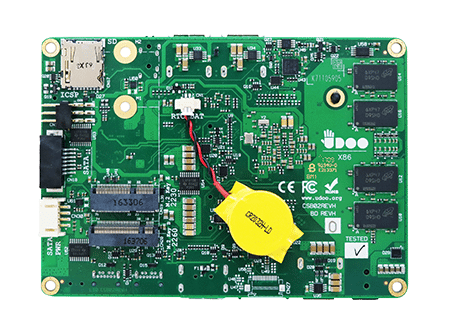- makeITcircular 2024 content launched – Part of Maker Faire Rome 2024Posted 2 weeks ago
- Application For Maker Faire Rome 2024: Deadline June 20thPosted 2 months ago
- Building a 3D Digital Clock with ArduinoPosted 7 months ago
- Creating a controller for Minecraft with realistic body movements using ArduinoPosted 7 months ago
- Snowflake with ArduinoPosted 8 months ago
- Holographic Christmas TreePosted 8 months ago
- Segstick: Build Your Own Self-Balancing Vehicle in Just 2 Days with ArduinoPosted 8 months ago
- ZSWatch: An Open-Source Smartwatch Project Based on the Zephyr Operating SystemPosted 9 months ago
- What is IoT and which devices to usePosted 9 months ago
- Maker Faire Rome Unveils Thrilling “Padel Smash Future” Pavilion for Sports EnthusiastsPosted 10 months ago
Mouser Now Offers The Powerful Open Source UDOO x86 SBC

We spoke about the UDOO Kickstarter campaign just over a year ago.
From this month, the powerful x86 single board computers are available on Mouser.com.
The open source X86 combines the power of a PC with prototyping capabilities of the Arduino 101 and claims to have a 10 times faster execution time than the Raspberry Pi 3.
The boards are ideal for prototyping applications requiring multimedia capabilities and high levels of parallel computing. The boards provide a flexible environment that lets engineers explore the IoT, build a media player powerful enough to drive three 4K displays, or create a retrogaming platform.
The X86 boards are versatile enough for 3D scanning, robotics, gaming, streaming video, and computer vision applications.
You can choose between 4 different models, all of which are based on 64-bit quad-core Intel® processors:
- BASIC is based on an Intel Atom x5-E8000 processor with 2GBytes of RAM.
- ADVANCED run on an Intel Celeron N3160 processor with 4GBytes of dual-channel RAM.
- ADVANCED PLUS run on an Intel Celeron N3160 processor with 4GBytes of dual-channel RAM and it also includes 32GBtyes of eMMC storage.
- ULTRA is based on an Intel Pentium N3710 with 8GBtyes of dual-channel RAM and burst frequency up to 2.56GHz. It also includes 32GBtyes of eMMC storage.
All boards feature an M.2 Key B SSD Slot, M.2 Key E slot for Wi-Fi and Bluetooth 4.0 modules, SATA connector, and Gigabit Ethernet.
The boards offer compatibility with any x86-compatible operating system as well as the Arduino 101 IDE, shields, sketches, and libraries. The onboard Arduino-compatible platform is connected to the Intel processor through an internal USB port, so the Arduino 101-compatible microcontroller can run when the processor is powered off and wake it up when necessary, making the X86 ideal for IoT designs.
















